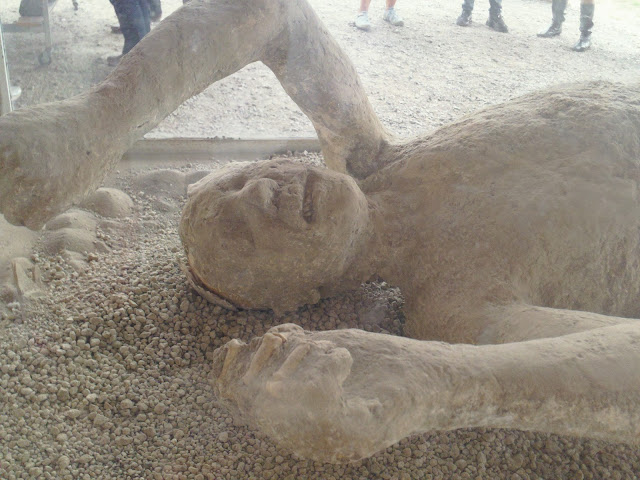Tuesday, February 22, 2011
ROME
The Arch of Titus, Rome, commemorating the Roman victory over the Jewish rebellion of 70 AD.
Augustus, the first Emperor of Rome, a statue known as the Augustus Primaporta.
Frieze from the Ara Pacis (Altar of Peace) showing members of the Imperial family.
The Pont du Garde, a bridge and an aqueduct, southern France, Roman
Apollodorus of Damascus, Markets of the Forum of Trajan, Rome
The Pantheon, Rome, exterior
The Pantheon, Rome, interior
ROME
SPQR
Augustus
Roman Architecture
--arch
--vault
--dome
--concrete
forum
Trajan's Forum
--Emperor Trajan
--Apollodorus of Damascus
--basilica
------clerestory
The Pantheon
--Emperor Hadrian
--oculus
Read Chapter 9
The End of Pompeii
The city of Pompeii, south of modern Naples, ended suddenly in the year 79 CE in a catastrophic volcanic eruption. Mount Vesuvius, dormant for centuries, suddenly awoke and exploded, destroying the cities of Pompeii and Herculaneum, and leaving a massive crater where the mountain once stood.
Unknown thousands of people died in the eruption. Vesuvius buried Pompeii and the surrounding countryside under 13 to 20 feet of volcanic ash, boulders, and pumice. The city was so thoroughly buried and the landscape so altered that people forgot where the city was. Pompeii was not rediscovered until 1599. Excavations began 1748.
The airless dry volcanic ash preserved a lot of normally perishable items from the city, including the dead.
The ruins of Pompeii today. After 250 years of excavation, much of the city still lies buried.
Mount Vesuvius rises on the horizon. The peak on the right is part of the crater rim left by the eruption of 79CE. Vesuvius was originally a much higher mountain before the 79CE eruption.
A loaf of bread carbonized by the eruption.
Skeletal remains of victims of the eruption left where they were found.
Excavators discovered that many bodies as they decayed left hollows in the hard volcanic ash. They poured plaster into the hollows and created remarkably vivid casts of people at the moment they died. It was long thought that victims suffocated under the ash. Scholars now believe that these victims died suddenly from the intense heat of pyroclastic flows.
The face of a woman at the moment of her death.
A remarkably vivid cast of a child.
A computer animation of what the last day of Pompeii might have looked like.
It was long thought that the people of the nearby city of Herculaneum escaped since no human remains were found in its ruins. Recent excavations of what were once boathouses on the beach revealed the remains of hundreds of people caught by the eruption as they awaited evacuation.















